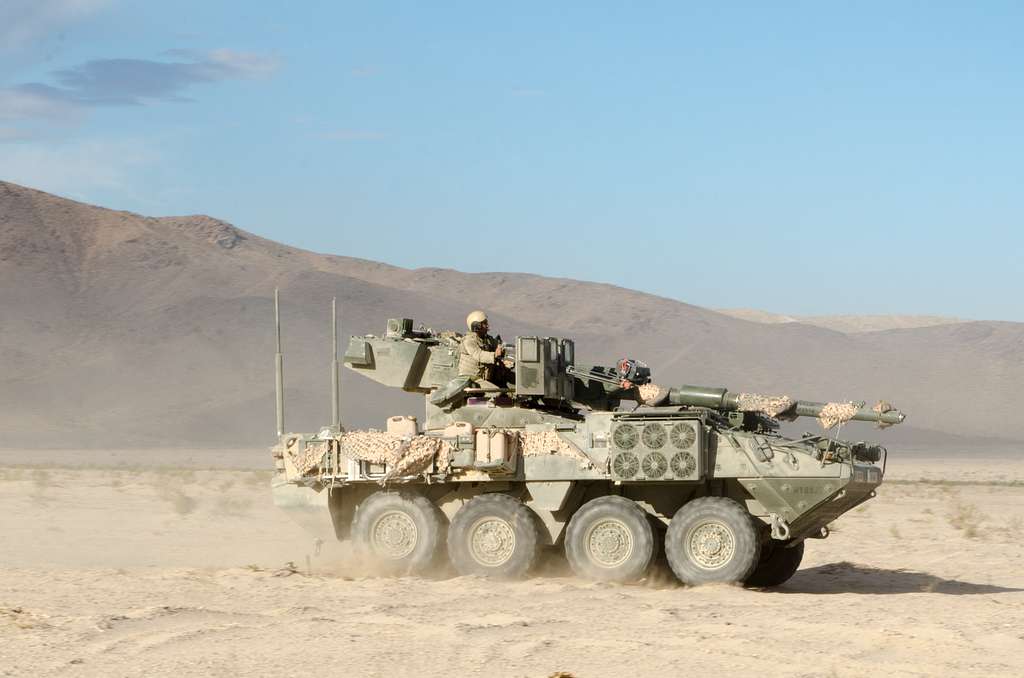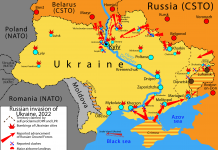
India is stepping up its presence on the global defense stage as it engages in discussions with the United States regarding the acquisition and joint production of advanced combat vehicles. Additionally, a major agreement on fighter jet engines is in the works. These developments coincide with Prime Minister Narendra Modi’s upcoming meeting with U.S. President Donald Trump.
Traditionally, India has relied heavily on Russian-made military equipment, but a shift is underway. Modi’s visit to Washington follows efforts from Trump to encourage India to adopt more American defense technology. The U.S. is eager to strengthen trade and security ties, seeking a greater role in India’s defense sector.
One area of interest is the Stryker, an armored vehicle long used by the U.S. Army and manufactured by General Dynamics. Negotiations have been ongoing regarding India’s potential acquisition and co-production of these vehicles. This initiative is not merely about modernizing India’s arsenal; it represents a significant step toward deepening strategic defense cooperation between the two nations.
Furthermore, discussions are progressing on the local production of fighter jet engines, a project initiated in 2023. India aims to manufacture these engines domestically for its air force, and negotiations with General Electric, a key player in aerospace technology, are advancing rapidly. Both sides are working toward finalizing the deal, with a March deadline looming. India’s Defense Production Secretary, Sanjeev Kumar, has underscored the urgency, emphasizing the need to accelerate the partnership.
Beyond agreements on paper, India’s defense expansion is tangible. The country is eyeing Stryker vehicles equipped with anti-tank missile systems, intending to establish a co-production setup with a state-run defense firm. This approach ensures that India is not merely a buyer but also an active participant in high-tech defense manufacturing.
These moves are unfolding in a dynamic global environment where defense deals extend beyond hardware to geopolitical influence. While it remains uncertain whether these negotiations will be central to Modi’s discussions with Trump, topics like defense, technology, and trade are set to take precedence. India is increasingly positioning itself as a significant defense player, with Washington as a key partner.
The prospect of manufacturing Stryker vehicles within India could mark a major milestone for the country’s defense industry and economy. However, achieving this goal presents challenges. The production of sophisticated military hardware demands advanced technology, specialized expertise, and a strong supply chain. Successfully establishing a local manufacturing base could stimulate new industries and generate employment opportunities.
A domestic production facility would also reduce India’s dependence on foreign suppliers, leading to cost efficiency and a more sustainable defense procurement strategy in the long term. Additionally, if India begins producing Stryker vehicles locally, it could emerge as a regional defense supplier, potentially exporting these vehicles to other nations and strengthening its position in the global defense market.
Nevertheless, the path forward is not without obstacles. Manufacturing the Stryker is not just about assembling components—it requires mastering complex technologies, engineering skills, and maintenance systems associated with high-end military hardware. While India has made progress in defense production, significant investments in infrastructure and workforce training would be necessary to meet global production standards. Collaboration with U.S. companies such as General Dynamics could offer valuable support, but India would need to develop the expertise required to operate and sustain the production lines.
Political and geopolitical factors could also influence the success of this initiative. While a partnership with the U.S. presents opportunities, it carries inherent risks due to shifting political dynamics and potential diplomatic tensions. Disruptions in the supply chain or policy changes could pose significant challenges. Additionally, India’s longstanding reliance on Russian defense equipment may complicate efforts to integrate Western military systems into its existing framework.
Domestically, India’s defense procurement process is often criticized for being slow and bureaucratic, which could delay or complicate the production of the Stryker. Overcoming these inefficiencies would be crucial to the project’s success. The government would also need to allocate substantial funding to equip production facilities and support the manufacturing demands of such an advanced vehicle.
From an economic perspective, while the local production of Stryker vehicles could create jobs and boost the defense sector, its broader impact on the Indian economy remains uncertain. Defense manufacturing is a specialized industry, and while exports could offer some financial benefits, they are unlikely to have an immediate, large-scale effect on the overall economy. Additionally, prioritizing military production could divert resources from other critical sectors like education and healthcare, raising concerns about balanced economic development.
The Stryker is a series of wheeled armored vehicles designed for the U.S. Army, offering a high-mobility, multi-role platform suited for various combat and support operations. Unlike traditional tracked tanks, the Stryker is lighter and more deployable while still providing firepower and protection. Its 8×8 wheeled configuration allows it to operate efficiently on highways and rough terrain, making it well-suited for rapid-response missions.
The Stryker family includes multiple variants tailored to different battlefield needs. Among them are the Infantry Carrier Vehicle (ICV), which transports infantry squads, the Mobile Gun System (MGS) equipped with a 105mm cannon for direct fire support, and the Reconnaissance Vehicle (RV) featuring advanced sensors for intelligence gathering.
The Stryker’s adaptability makes it valuable for a wide range of missions, from urban warfare to reconnaissance. Equipped with remote weapon systems and upgraded armor, it enhances survivability, particularly against threats such as improvised explosive devices (IEDs). The vehicle also integrates modern communication and command systems, ensuring effective battlefield coordination.
Over the years, the Stryker has undergone multiple enhancements to maintain its relevance in modern combat scenarios. It has been extensively deployed in conflicts such as Iraq and Afghanistan, proving its reliability in expeditionary operations. As warfare continues to evolve, the Stryker remains an integral part of U.S. military strategy, and its potential adoption by India could further cement defense ties between the two nations.




